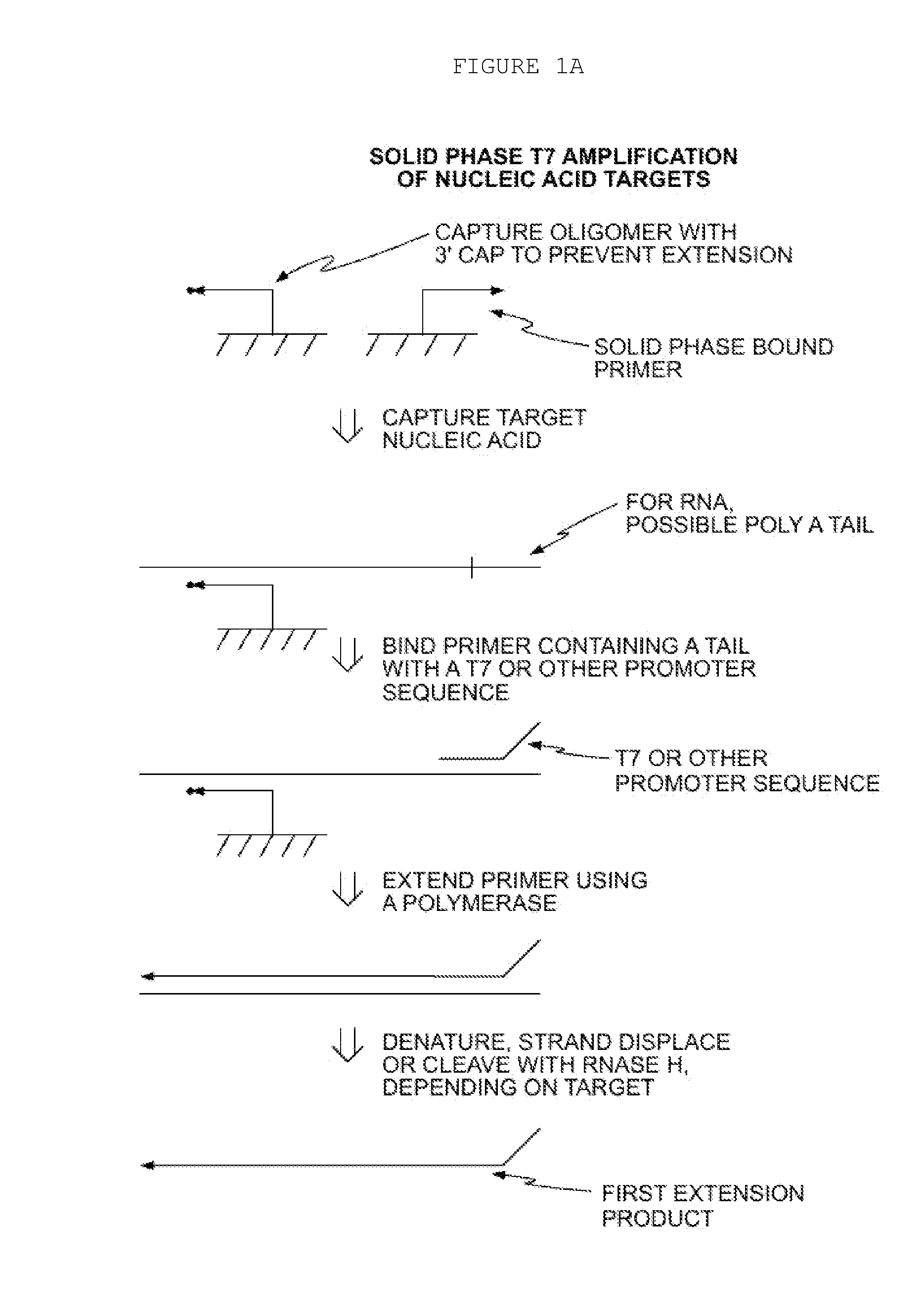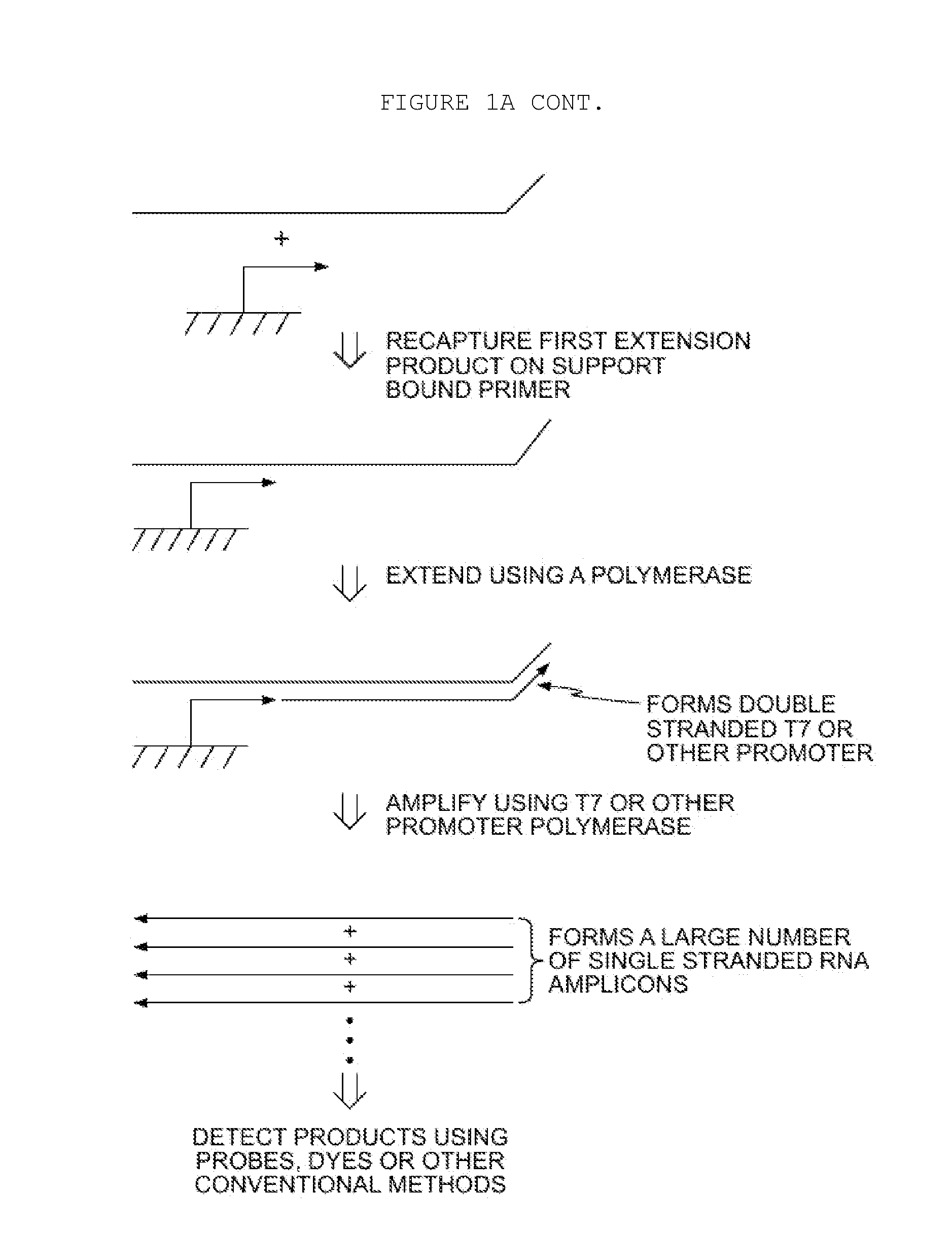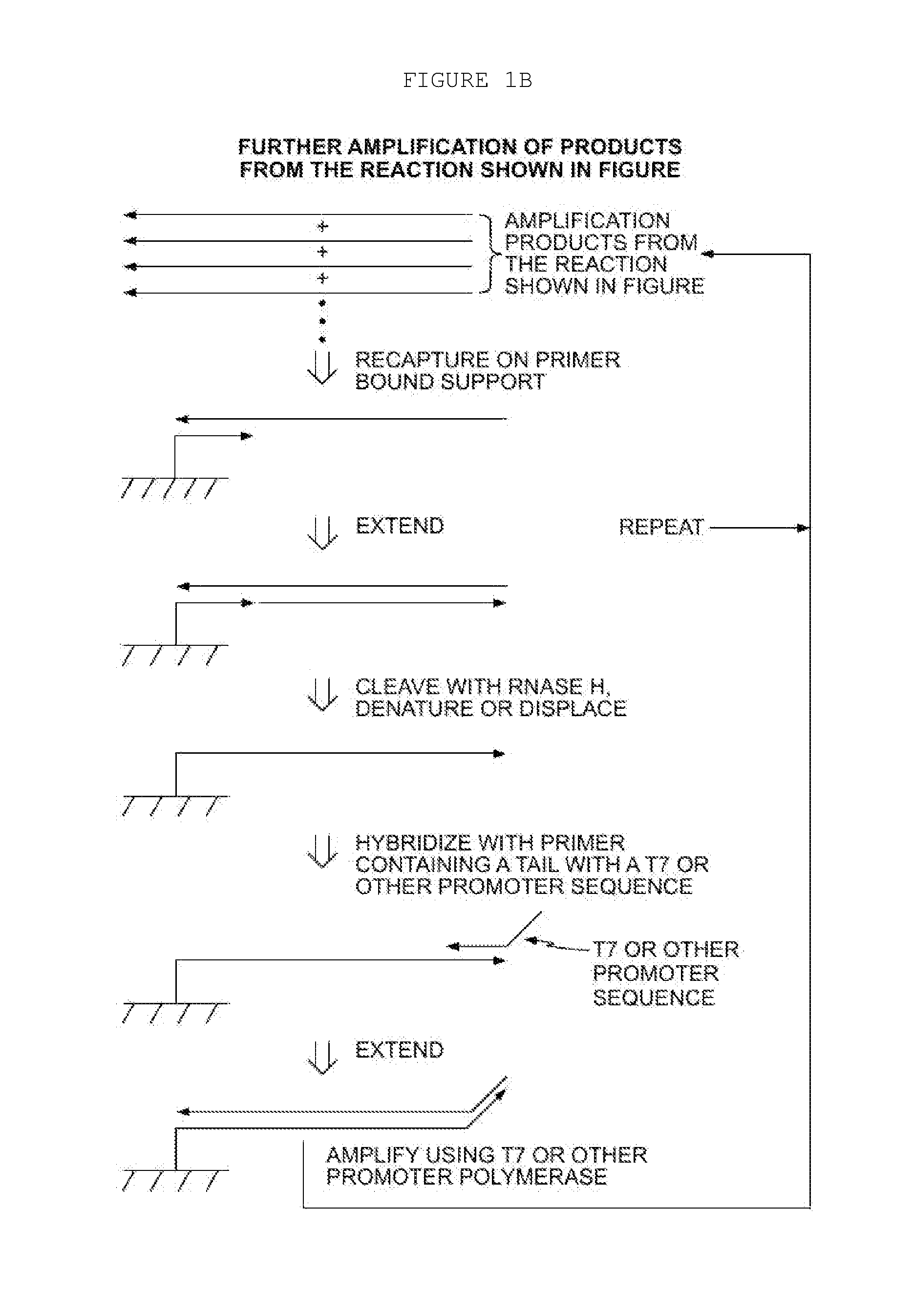Methods for Amplification of Nucleic Acids on Solid Support
a technology of nucleic acids and solid supports, which is applied in the direction of fermentation, biochemical equipment and processes, microorganism testing/measurement, etc., can solve the problems of lack of performance in sensitivity, specificity, precision, accuracy and other features, and slow method speed, etc., to achieve the effect of assisting identification and orientation
- Summary
- Abstract
- Description
- Claims
- Application Information
AI Technical Summary
Benefits of technology
Problems solved by technology
Method used
Image
Examples
second embodiment
[0071]In the aspect described above, a displacer oligonucleotide may also hybridize to the target nucleic acid at a location that is 3′ of the first primer. When the first primer is extended, the displacer is also extended, displacing the extension product of the first primer from the target nucleic acid. One advantage of this approach is that thermal denaturation is not required to remove the extension product from the target nucleic acid, for example, if the target is DNA, digestion with RNaseH would not be considered. Furthermore, the extension product of the displacer may also enter the amplification process, thus increasing amplification yield. Additionally, a blocker oligonucleotide may also hybridize to the target nucleic acid. The blocker binds to the target nucleic acid at a location to the 5′ side of the primer. The blocker arrests extension of the primer (as well as the displacer, if used), thus defining the length of the extension product(s). This technique of employing ...
third embodiment
[0072]In a third embodiment, the sequence of the oligonucleotides may comprise degenerate bases and / or regions of random bases, or may consist of random bases in its entirety, thus yielding low specificity. The method described herein yields an improvement over other existing methods in regards to control of assay specificity, in that the specificity can be modulated using the first and second immobilization oligonucleotides and the first primer in a manner described above. For example, designing first and second immobilization oligonucleotides and the first primer to hybridize the target nucleic acid with high specificity can achieve exquisite specificity. Correspondingly, the binding of the target nucleic acid to the first immobilization oligonucleotide can be performed under conditions of lower specificity. This allows multiple target types to be captured including wild type and mutant sequences, whereas the extension of the second immobilization oligonucleotide can be performed ...
fourth embodiment
[0073]In a fourth embodiment, a set of four different second immobilization oligonucleotides are designed, each equipped with a different nucleotide (A, C, G or T) at the 3′-terminus. Each being specific for a different SNP in the corresponding position of the target nucleic acid(s). In one configuration, these four different second immobilization oligonucleotides may be bound to a solid support surrounding the first immobilization oligonucleotide. After capture of the target nucleic acids of interest using the first immobilization oligonucleotide and production of the first strand cDNA, re-capture of the cDNA with the second immobilization oligonucleotide and specific extension (i.e. matched 3′-terminus will extend and mismatched will not), all 4 possible SNPs can be identified in one assay.
PUM
| Property | Measurement | Unit |
|---|---|---|
| length | aaaaa | aaaaa |
| distance | aaaaa | aaaaa |
| nucleic acid | aaaaa | aaaaa |
Abstract
Description
Claims
Application Information
 Login to View More
Login to View More - R&D
- Intellectual Property
- Life Sciences
- Materials
- Tech Scout
- Unparalleled Data Quality
- Higher Quality Content
- 60% Fewer Hallucinations
Browse by: Latest US Patents, China's latest patents, Technical Efficacy Thesaurus, Application Domain, Technology Topic, Popular Technical Reports.
© 2025 PatSnap. All rights reserved.Legal|Privacy policy|Modern Slavery Act Transparency Statement|Sitemap|About US| Contact US: help@patsnap.com



